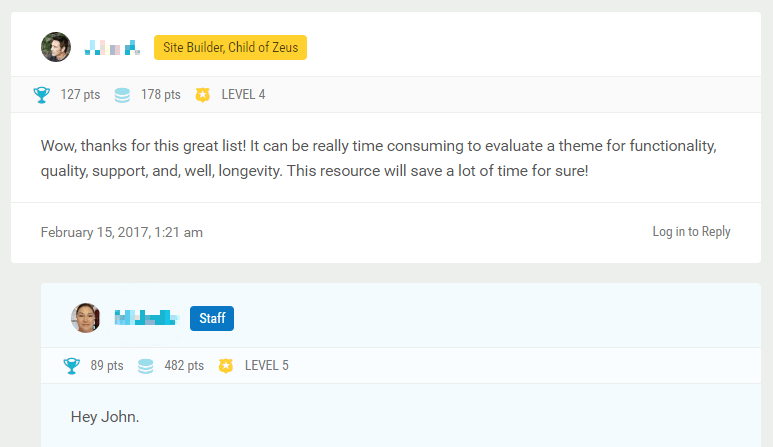- Mar 07, 2017
 0
0- by A2 Marketing Team
Your website’s content may be top notch, but if you aren’t engaging your readers, building a solid user base is going to be an uphill battle. Furthermore, you might be losing out on a lot of conversions by not making an effort to connect with visitors.
If you want to see track your website is performing, check out some of A2 Hosting’s Analytics Hosting solutions. Analytic solutions generally offer any statistic you could want ranging from who are the top traffic referrers to conversion rates to bounce rates.
By increasing engagement, you can expect users to spend more time on your site and hopefully, as a result, convert to fully-fledged customers. Moreover, continued engagement from customers can help to form a community of loyal followers that act as ambassadors for your content.
Thankfully, developing a reliable engagement strategy doesn’t have to take that much effort. In this article, we’ll introduce you to four simple ways to get your engagement up, why they work, and how to implement them.
1. Improve Your Internal Linking Strategy
Internal links are those that lead visitors to other pages within your own website, and they’re a good idea for several reasons:
- Engagement boost. They can improve engagement by pointing users towards other content they might be interested in, thus keeping them on your site for longer.
- Simpler navigation. Internal links make it easier for users to navigate through your site and find the content they might otherwise miss.
- Distributed ‘authority’. Using internal links enables you to distribute authority from more popular pieces to others that might have been overlooked.
As you can see, there are plenty of reasons you’d want to take advantage of internal links. Best of all, they are super simple to implement. All you need to do is make sure the content you’re linking towards is relevant to your readers, and ensure you don’t abuse the number of internal links per page.
Finally, whenever possible, you should look to include links using contextually relevant anchor text rather than generic words. Ideally, the text of your link should provide readers with an idea of the content they’re about to see. This will improve usability and enable you to write content without having to add awkward pauses (such as “click here”) to include links.
2. Create Relevant Content
It should go without saying, but the content you produce for your website should always be relevant to your visitors’ interests. Take this blog, for example – we focus on topics that interest website owners.

In other words, you shouldn’t hold your breath for any articles on dog grooming anytime soon.
Focusing on relevant content will enable you to engage with your visitors more effectively, since they’ll come to trust you as an authority in your field over time. This will help raise your profile, which should entice others to seek your opinions. One of the best ways to do this is to aim for content that helps to solve problems, find the right tools to do so, and learn new skills.
However, before you put pen to paper, you’ll need to figure out what your audience’s interests are. Then, you should follow these basic guidelines to create content that will resonate with them:
- Focus on benefits. As a rule of thumb, most of your content should benefit your readers in some way. Think solving problems, or helping them find the right tools, as we mentioned earlier.
- Provide actionable advice. If you know your stuff, you shouldn’t be shy about it. Provide advice on what to do and how to do it whenever possible. Readers will recognize you as an authority and reward you for it.
- Use a friendly tone. Most people aren’t interested in unnecessarily long, dry content. Using an approachable tone in your content will enable readers to identify with you more easily.
If you keep these simple tips in mind, you should be well on your way to creating relevant and engaging content.
3. Interact With Your Visitors
There are plenty of ways to interact with your visitors, regardless of what type of website you’re running. You can connect with them via social media, answer their emails, and even participate in comments sections:

While some methods may be more engaging than others, merely taking the time to talk with your users is a step in the right direction. Fortunately, most major Content Management Systems (CMSs), including Wix and WordPress, come with a comments section feature out of the box. If you’re not using a CMS – or if you just like to do things manually – you can always add a comments section to your website with a few lines of code.
Aside from interacting within your own site, you should always make yourself available through social media. However, this doesn’t mean you need to have a presence on every platform. Choose the ones you feel are most suitable for your business and focus on those. If you provide an excellent level of customer support throughout your platforms of choice, word will get around!
4. Use Compelling Calls To Action (CTAs)
Think about CTAs as prompts for your visitors to do specific tasks. If you’ve ever come across a Join Now or Add to Your Shopping Cart button, you’re already familiar with them. For example, the orange buttons in the image below each represent a separate clickable CTA:

A few simple CTAs here and there can boost your engagement if used judiciously. For example, you might direct visitors to comment on your articles (as we usually do), subscribe to your email list, or even reach out to you via social media.
The keys to a compelling CTA are to use the right language for each situation and consider their placement carefully. As an example, it wouldn’t make sense to prompt users to comment on an article before they’ve had the chance to read it – which also brings us to our last point. Each CTA should be relevant to the content at hand, so as not to prompt actions that wouldn’t make sense.
Conclusion
Focusing on boosting your website’s engagement is one of the best decisions you can make for its long-term growth. It also happens to be one of the most rewarding. Aside from keeping visitors on your site, increased engagement enables you to get to know your users. This will provide you with unique insight that you can use to steer your website in the right direction.
If you’re looking to boost engagement, here’s a recap of four simple ways you can go about it:
- Improve your internal linking strategy.
- Create relevant content.
- Interact with your visitors.
- Use compelling CTAs.
Image credit: Startup Stock Photos.












